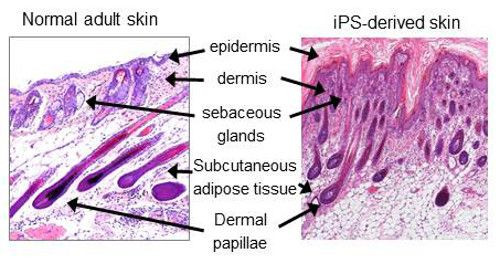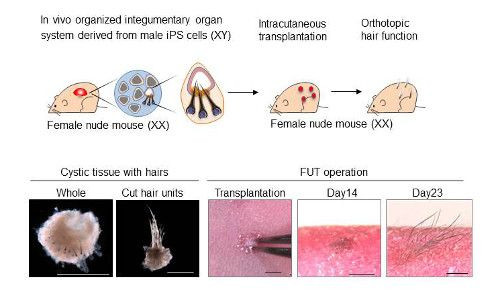Japanese scientists use stem cell to grow artificial skin with sweat glands, hair follicles

The stem cell has once again proven its value to medical science, this time by growing from the cells artificial skin with hair follicles and sweat glands. Expected to benefit from this development are burn victims.
The scientific breakthrough, by the RIKEN Center for Development Biology and other research institutions in Japan, is a major improvement from past efforts to develop artificial skin by creating lab-grown epidermis that closely approximates the function of normal tissue. To do that, the scientists used mice cells and chemicals to transform it into induced pluripotent stem cells.
These are undifferentiated cells which can turn into any type of cell in the body. To transform these pluripotent cells into skin cells, the skin’s chemical environment was recreated by using batches of cells to replicate real skin, to include the subcutaneous fat layer, dermis and epidermis, reports Gizmodo.
For the research, published in Science Advances, the scientists took the cells from mouse gums and placed it in culture where the cells properly developed into an embryoid body (EB). It is a three-dimensional clump of cells which partially resembles developing embryo in an actual body. The researchers created the EBs from iPS cells by using Wnt10b signaling, according to a RIKEN press statement.
The matured and differentiated tissues were transplanted onto the skin of live mice that were hairless. The rodent’s skin developed normally and it made normal connections with the surrounding fibres and muscle nerves which allowed for normal function, including hair growth.

But while the new tissue could connect to nerve fibres, it could not make fibres which becomes a problem for patients with severe nerve damage. Another issue that researchers need to address is the hair which grows on the transplanted skin does not always align with the skin on the rest of the body. There had also been instances when black hair grew out of the new skin of white-haired mice.
Takashi Tsuji, lead author of the study, says the new technique brings closer “to the dream of being able to recreate actual organs in the lab for transplantation.” He adds by growing tissue using the method, it could be an alternative to testing of chemicals on lab animals.





















